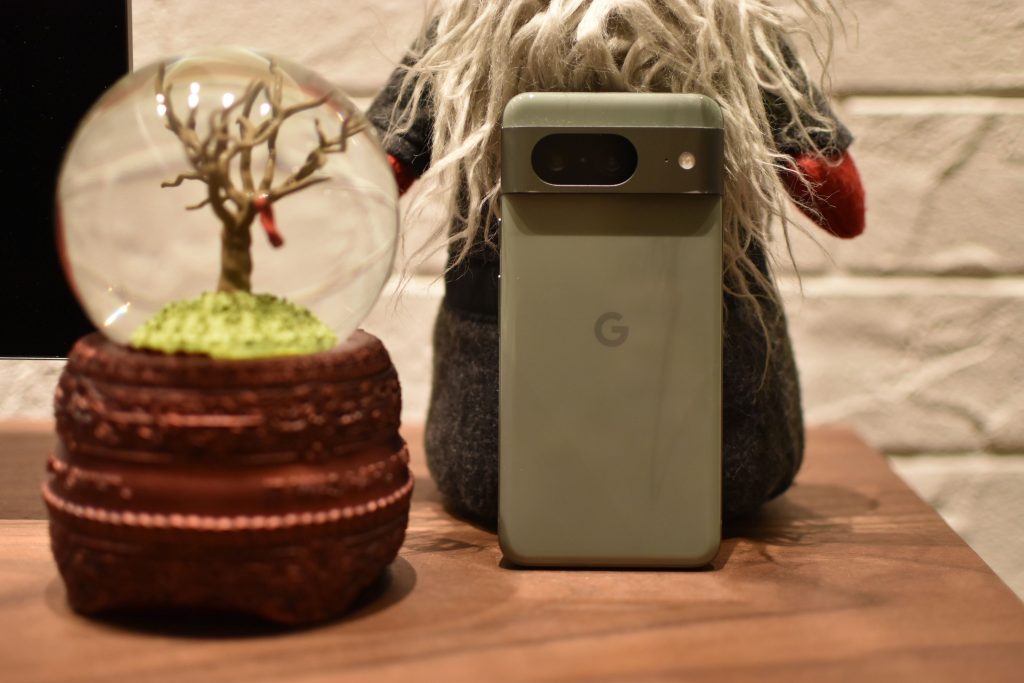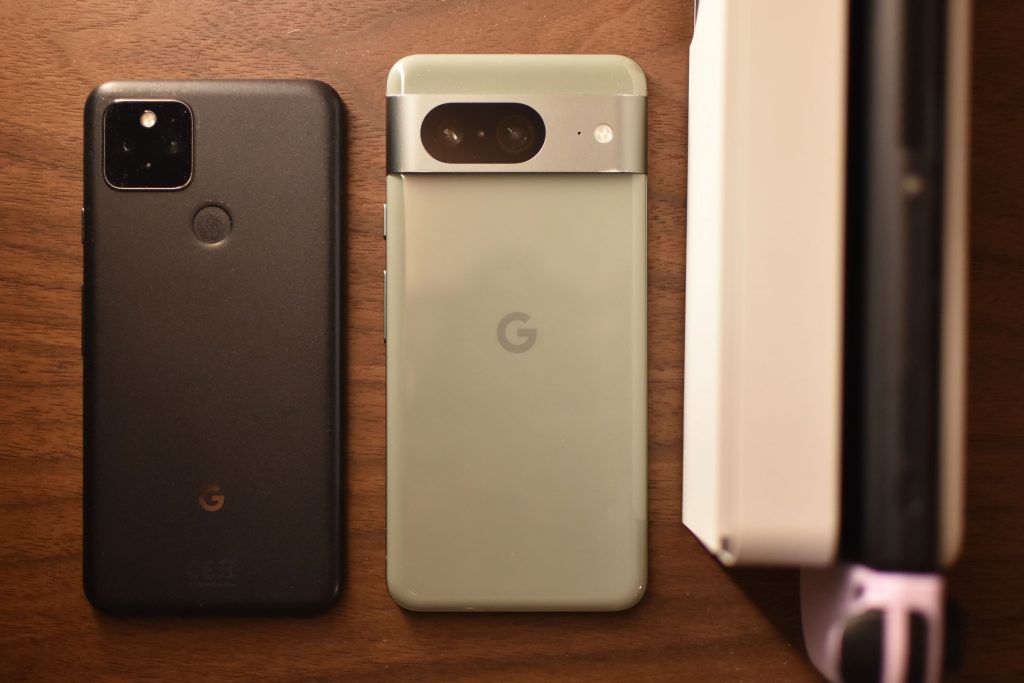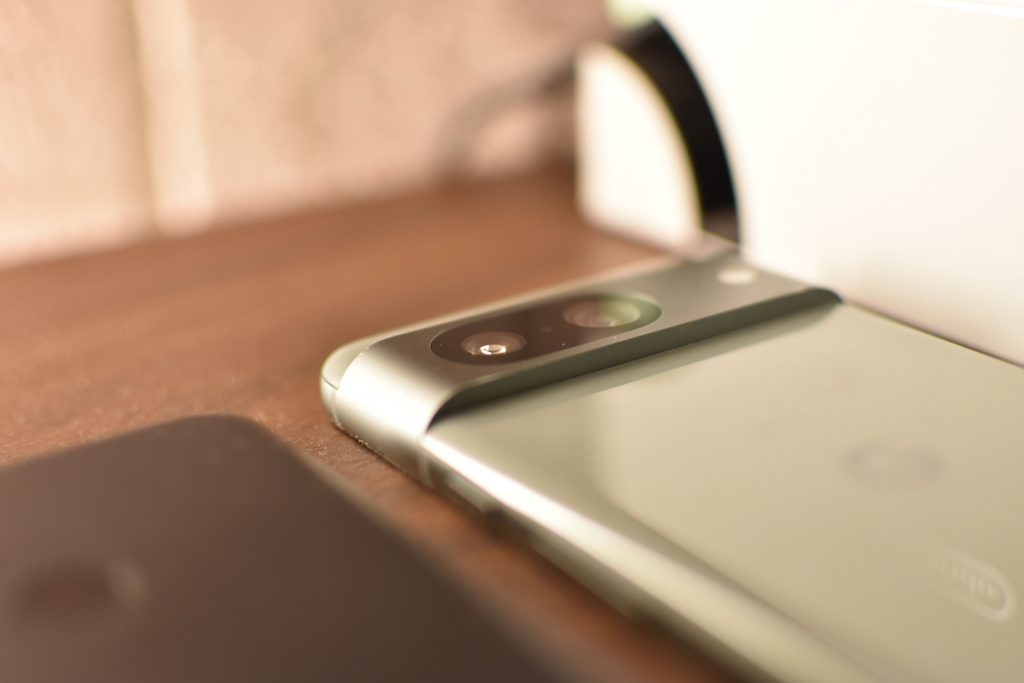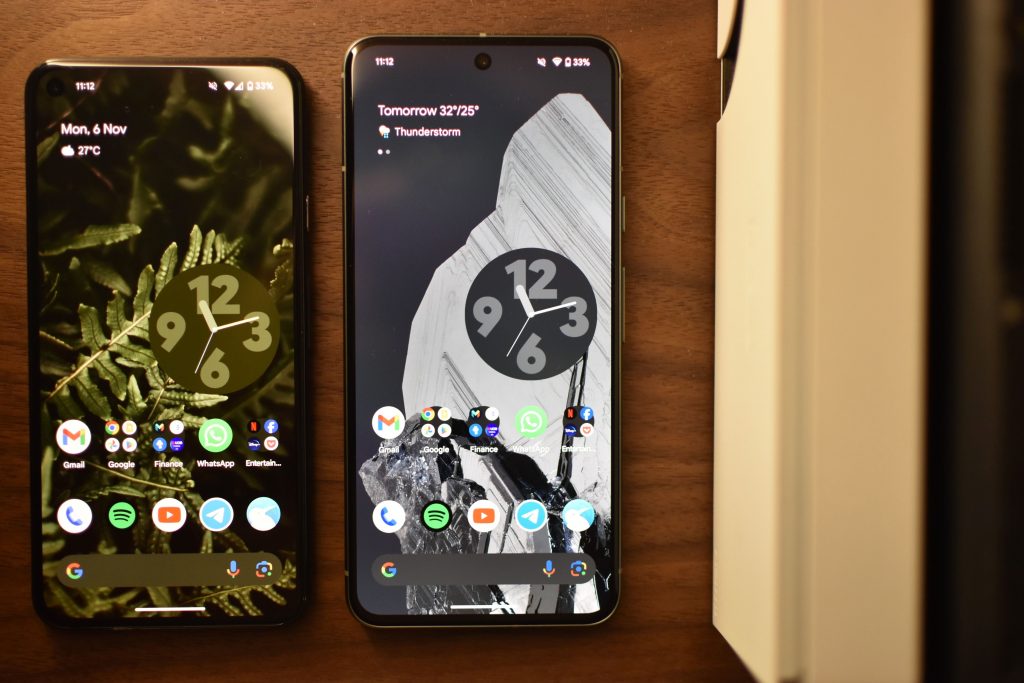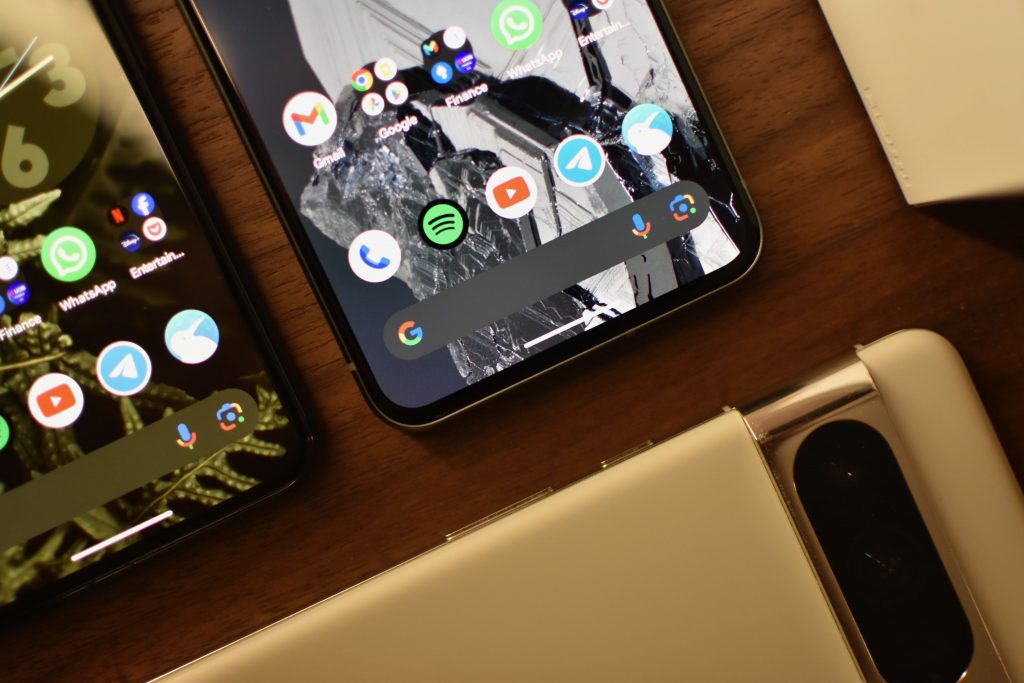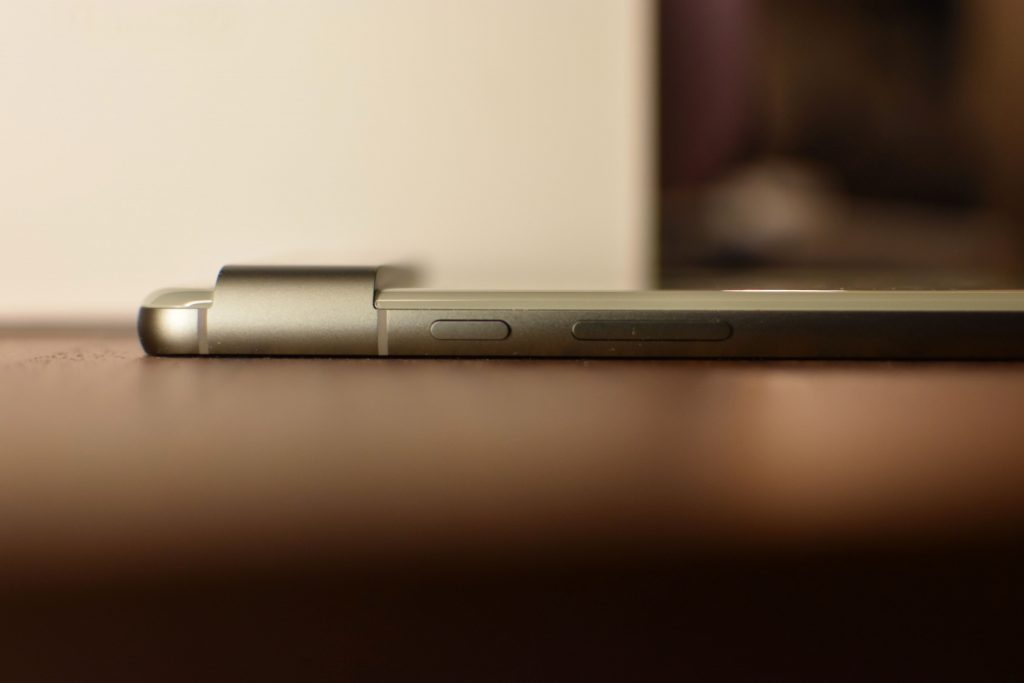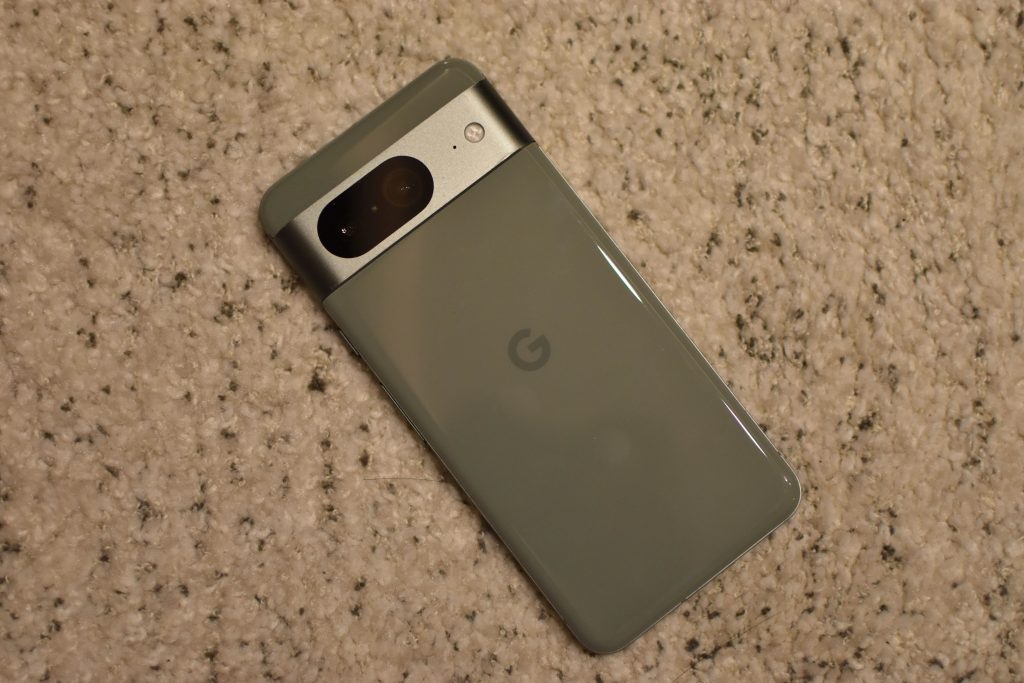Last year, I lamented that the Pixel 7 was a minor refinement of the Pixel 6. It was a little sleeker and a little more polished, but ultimately I concluded that it was more or less the same phone.
That’s where the Pixel 8 has me stumped. On paper, it’s yet another minor refinement of last year’s phone. But using it for a couple of weeks, I found myself drawn to the Pixel 8 in a way that I never was with either of its predecessors.
It turns out that this time round, all the little refinements add up to a noticeable improvement in my experience with the phone. So let’s talk about that. But first, the specs.
Pixel 8 Specifications
- 150.5 x 70.8 x 8.9 mm, 187g
- IP68 water and dust resistance
- 6.2″ 120Hz OLED, up to 1400 nits sustained, 2000 nits peak
- Google Tensor G3
- CPU: 1×3.0 GHz Cortex-X3 & 4×2.45 GHz Cortex-A715 & 4×2.15 GHz Cortex-A510
- GPU: Immortalis-G715s MC10
- 128GB/8GB or 256GB/8GB UFS 3.1 storage
- Cameras
- Main: 50 MP, f/1.7, 25mm, 1/1.31″, 1.2µm, dual pixel PDAF, Laser AF, OIS
- Ultrawide: 12 MP, f/2.2, 126˚, 1/2.9″, 1.25µm, AF
- Selfie: 10.5 MP, f/2.2, 20mm, 1/3.1″, 1.22µm
- Stereo speakers, no headphone jack
- Under display fingerprint reader
- 4575mAh battery, 27W wired charging, 18W wireless charging
- Colours: Obsidian, Hazel, Rose
Design & Build
Design and build are perhaps the areas in which the Pixel 8 is the most refined from its predecessor.
Interestingly, if you look across from the Pixel 6 to the Pixel 8:
- Display size went from 6.4″ on the Pixel 6 to 6.3″ on the Pixel 7 to 6.2″ on the Pixel 8
- The weight of the phones went from 207g to 197g to 187g
- The width of the phones went from 74.8mm to 73.2mm to 70.8mm
It seems that Google is gradually realising what I’ve been saying about the Pixels for the past couple of years – that they’re just too large and heavy for comfortable one-handed use.
This year’s Pixel 8 is practically the same width as the Pixel 5 – a phone that was widely praised for its ergonomics. And as such, it fits comfortably in my hand. It is significantly taller than the Pixel 5, but given that I hardly have to reach for the top-left corner of the phone, it’s hardly a problem.
The bezels, while still not perfectly symmetrical like the Pixel 5, are significantly more symmetrical than the Pixel 7 or 6’s. So much so that it practically looks symmetrical when you’re using the phone.
The corners are no longer uncomfortably sharp; they’ve been rounded off, once again, like the Pixel 5. This also contributes significantly to the in-hand comfort, and gives the phone a much friendlier look in my opinion.
Is it perfect? Almost. I still find it a tad too heavy. It’s fine when I’m out and about and want to respond to a quick text. But when I’m lazing on a couch, or lying in bed, holding the phone becomes tiring. Once again, I shall rant about the absurdity of having glass as the back material for phones – it’s heavy, it’s slippery, and it’s brittle. I miss the days of matte polycarbonate and brushed aluminium phone backs. They felt so much better to hold, were so much lighter, and didn’t shatter on impact.
Google, please bring back the back material you used for the Pixel 5. Or even better, the Nexus 5.
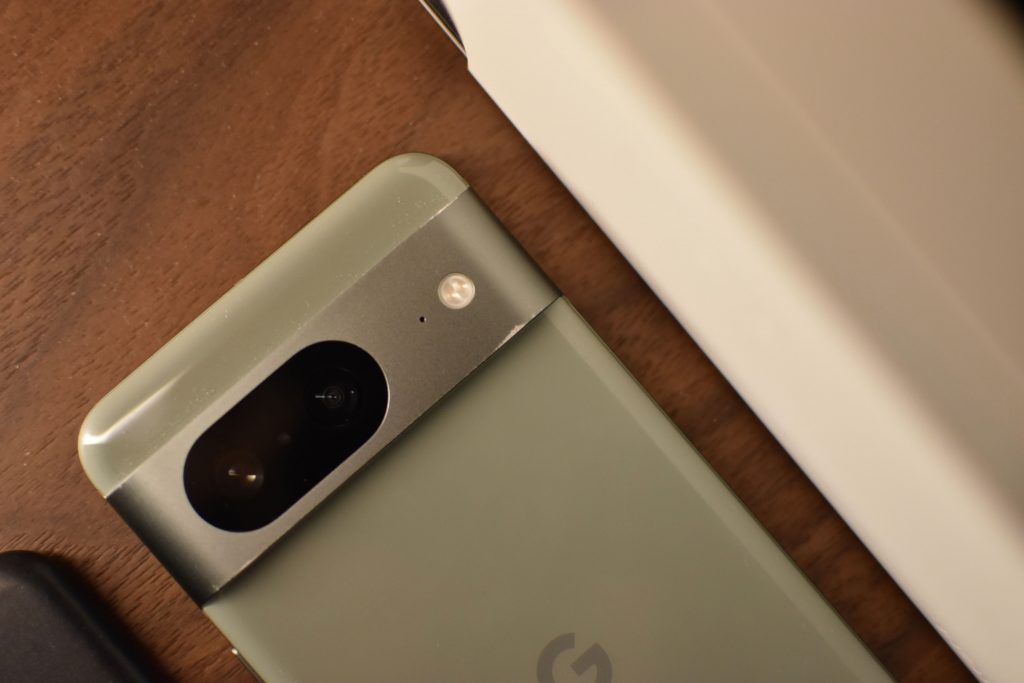
One other gripe on the build – the camera bar protrudes just a bit too much, and the brushed aluminium is way too easy to scuff. I babied my review unit and have only had it for a couple of weeks, but the edges are already pretty scuffed up.
Cameras
It seems a bit pointless to talk about the cameras on the Pixel 8, because as always, they are excellent. The cameras, other than the software, are my primary reasons for considering a Pixel phone over any other.
Hardware wise, nothing much has changed from the Pixel 7. The main camera still uses the same sensor, albeit with a slightly wider aperture. The ultrawide camera is slightly improved as it now has autofocus and a slightly wider field of view. There’s also a new macro mode, which works fine, but it’s not something that I’ll use often. I’ll let the image samples speak for themselves.
(Below) Pixel 8 main camera, 1x zoom (left), 2x digital zoom (centre), 5x digital zoom (right)



(Below) Pixel 8 main camera, 1x zoom (left), 2x digital zoom (centre-left), 5x digital zoom (centre-right), 8x digital zoom (right)




(Below) Ultrawide camera produces great shots in normal and low light


One thing that continues to be missing from the Pixel 8’s camera lineup is a dedicated telephoto camera. And that’s a bummer, as the telephoto performance has been a highlight of the Pixel 6 Pro and Pixel 7 Pro. Sadly, as with previous years, if you want proper zoom performance, you’ll have to spring for the Pro, which is significantly more expensive this year (starting at S$1,549).
The good news is that Google’s digital “Super Res” zoom does a decent job if you want to get up to take photos of objects up to 8x. But you definitely lose detail compared to the dedicated telephoto lens on the Pro. Here are some comparison shots.
Below, it is clear that the digital zoom of the Pixel 8 is vastly superior to that of the Pixel 5, able to deliver far more detail thanks to the higher resolution of the main camera.
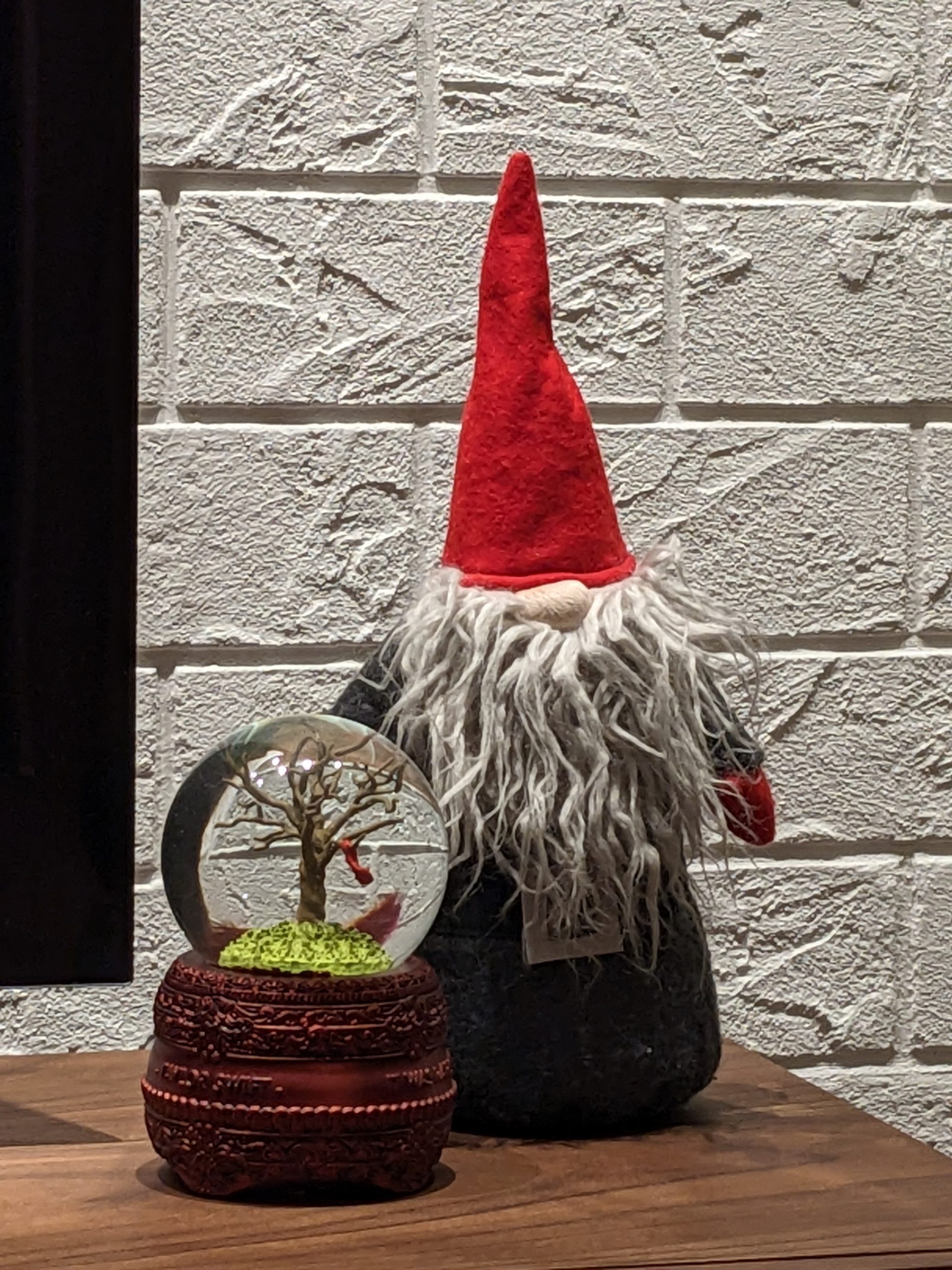
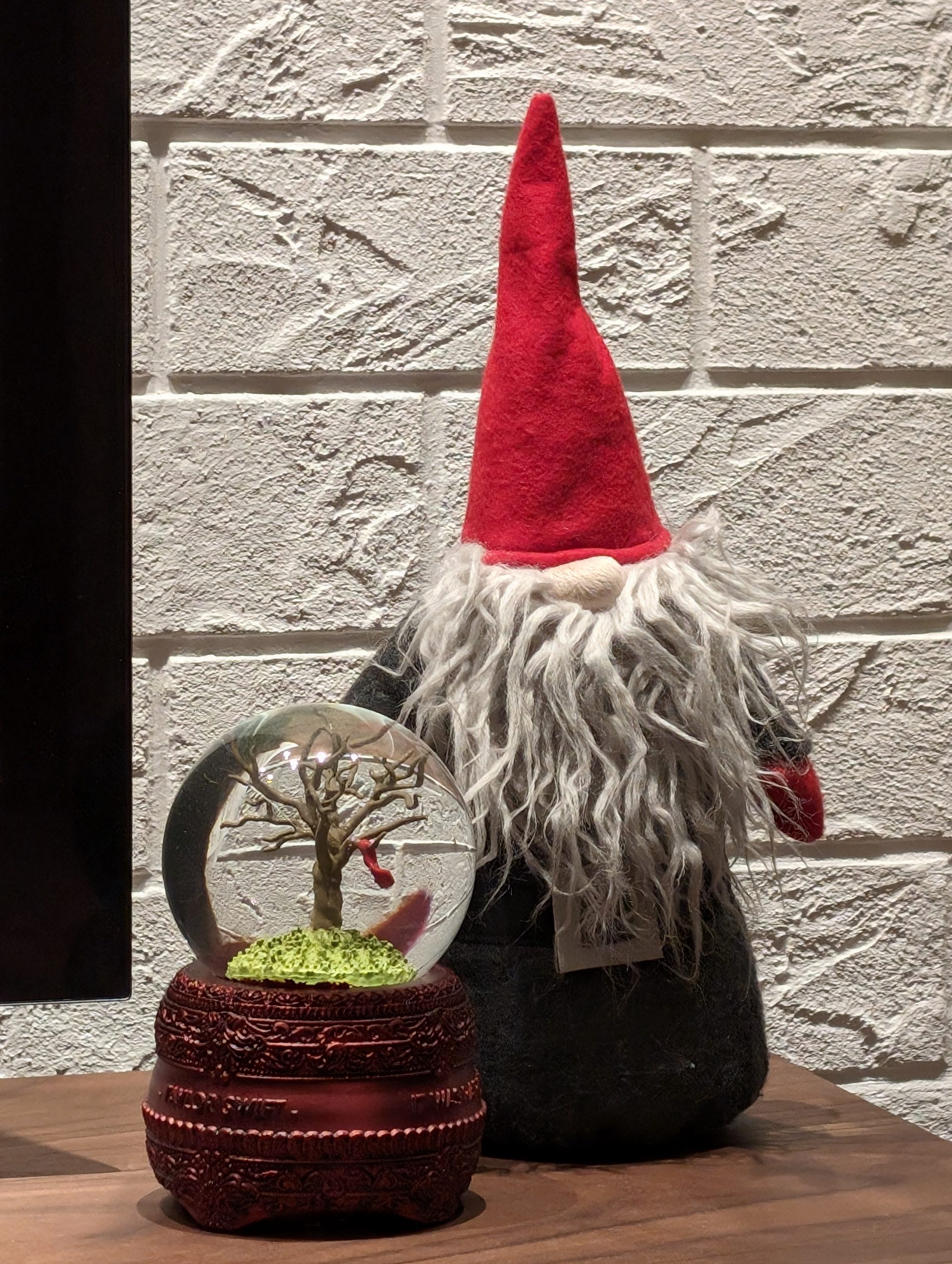
In the comparison between the Pixel 8 and the Pixel 8 Pro below, you can make out more detail in the fine strands of hair with the Pro’s 5x optical zoom if you enlarge the image. But when viewed as is, the quality is surprisingly similar.


Here’s another comparison between the Pixel 8 Pro’s optical zoom and the Pixel 8’s digital. In the Pro, you’re able to read the text “Police camera in operation”, but on the regular, you can’t make out the text at all. If you don’t crop in though, Pixel 8’s digital zoom is once again surprisingly serviceable, if not a tad bit oversharpened.
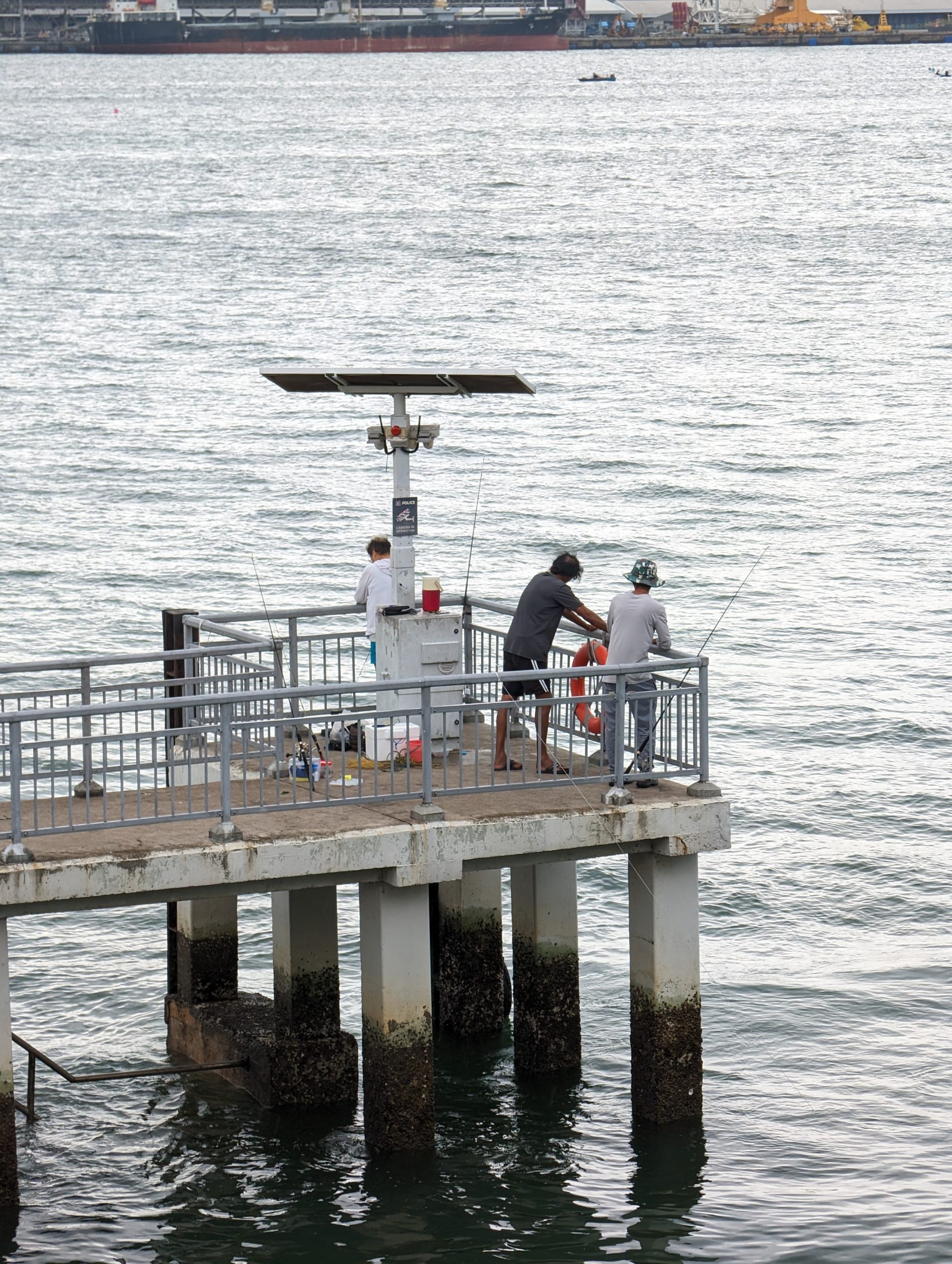
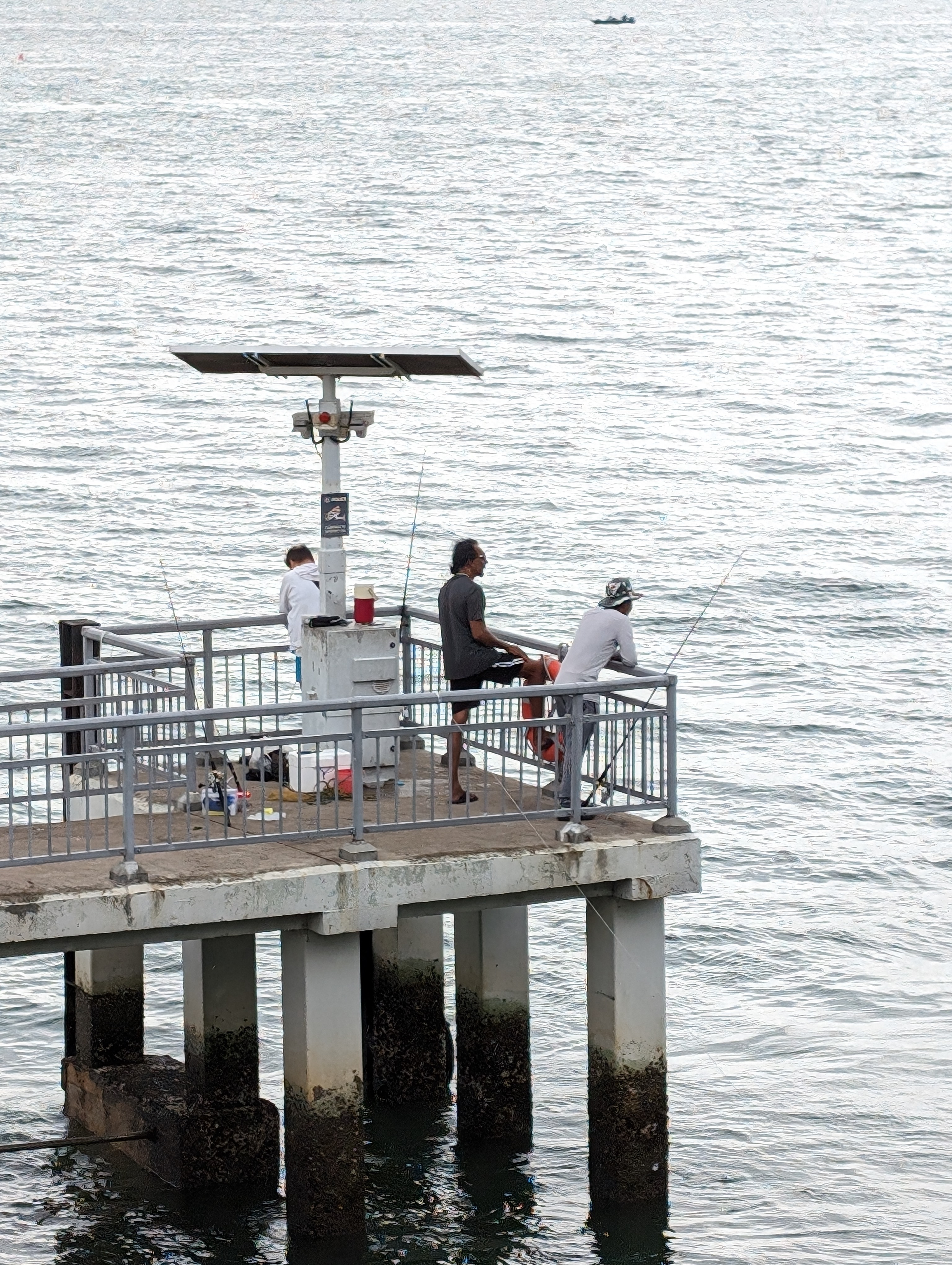
(Below) Pixel 8 Pro 5x optical zoom. Original image (left) vs cropped in (right). You are able to read the text clearly with the optical zoom.
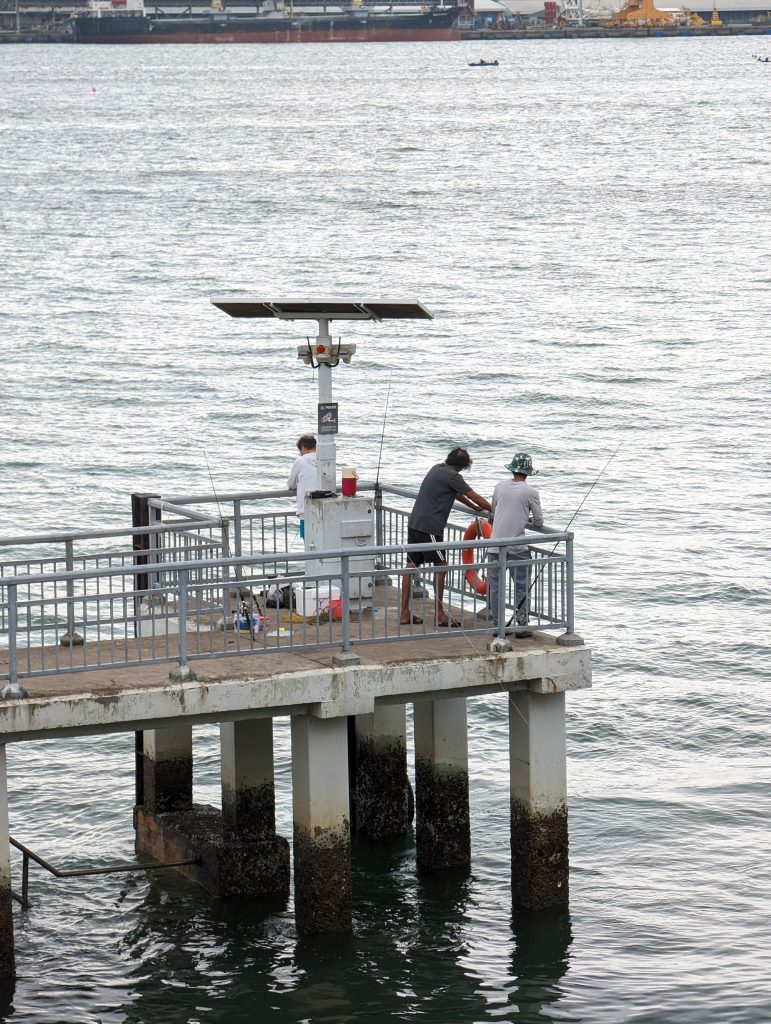

(Below) Pixel 8 5x digital zoom. Original image (left) vs cropped in (right). The text is unreadable.


Google has continued to add more AI features to its Google Photos app for Pixels. This year’s headlining feature is Best Take, which allows you to pick and choose people’s faces from across a burst of photos such that everyone looks their best. Magic Editor lets you move objects around an image a la Photoshop. There’s a whole debate to be had about making such features so easily accessible (What is a photo???), but I don’t want to get into that. They work fine, but I’m not too bothered by them as, once again, they are not features that I personally will use often.
Software & Support
Here lies the thing about the Pixel 7 that intrigues me the most – 7 years of software support. And not just security updates, no. Google is talking about OS updates, meaning the Pixel 8 will supposedly get Android 21 in 2030. This is admirable, given that even Apple does not make any official promises with its software updates. Unlike Google, however, Apple has an excellent track record when it comes to updating its devices – the iPhone 6s was supported for 6 years, launching with iOS 9 and ending with iOS 15. Whether Google will live up to its promise remains to be seen.
But software support is just one part of the equation. What good is updated software if the battery is degraded after 3 years? In the US, Canada, Australia, and parts of Europe, Google has partnered with iFixit to provide genuine spare parts for 7 years. But in Singapore, things are a bit more murky. Google tells me that Singaporeans can reach out to Google Support if they require servicing for their phones, with the official Google Service Centre being CTDI Singapore. Looking at the website, it seems that phones from all the way back to the Pixel 2XL are still being supported, so that’s a good sign. A battery replacement looks like it will cost you around S$100.
Either way, this is certainly a step in the right direction for Google, and one which I feel increases the value proposition over the Pixel 7, which will stop receiving OS updates after 2025, and security updates after 2027.
On to the actual software itself. Android 14 is once again a minor refinement from Android 13. The most noticeable changes for me being the new lock screen customisation and snappier transition animations. It’s a clean experience that I enjoy.
The highlight of the software is once again the AI features. Google claims that Tensor G3 is able to run machine learning models of 10x the size compared to the Pixel 6. In practice, that allows for some of the on-device AI features like improved clear calling, Audio Magic Eraser (remove background noise from your videos), and the aforementioned features in Google Photos. They are cool features to have, but not features that I see myself using often. Plus, given that we’re in Singapore, certain features, like call screening, are still not available here.
Everything Else
Display. The display on the Pixel 8 is a big step up from the Pixel 7. Firstly, it is now able to hit 1400 nits when outdoors (vs 1000 nits previously), which guarantees you’ll be able to view content clearly even under Singapore’s ridiculously bright sun. HDR output gets a brightness boost as well, with peaks being able to hit 2000 nits. Secondly, the refresh rate got a bump up from 90Hz to 120Hz, resulting in an even smoother experience than before. When you’re not interacting with the display, it dials back down to 60Hz to preserve battery life.
Face Unlock. While Face Unlock was a feature that has been around since the Pixel 7, Google is now confident enough in “Tensor’s advanced machine learning” to let you use it for unlocking payment apps. It worked well for my Paylah app, allowing me to make payments just a tad bit faster vs using the fingerprint reader.
Battery Life. Good, but unfortunately not fantastic. With 4-5h of screen-on time, I was hitting about 30% battery by the end of the day. This is with lots of background YouTube/Spotify streaming, texting on Telegram, and web browsing. While I’m confident that it will last you the full day now, it might struggle as the battery ages. The Pixel 8 also now supports 27W charging vs the slower 20W on the Pixel 7. That gives you 56% in 30min, and 100% in 1h 16min. While not blazing fast like offerings from OPPO and Xiaomi, it’s fast enough in my books for a quick topup.
Performance. Google didn’t talk much about performance of the Tensor G3, instead focusing on its improvements in AI capabilities. We talked about the AI stuff in the software section, so let’s focus on raw performance here. As mentioned above, efficiency is not the chip’s strong suit, leading to high standby battery draw. The phone also tends to get warm randomly when I’m using it for seemingly mundane tasks like web browsing and YouTube streaming. In terms of benchmark performance, the Tensor G3 still falls behind last year’s Snapdragon 8+ Gen 1, let alone this year’s 8 Gen 2. Sustained performance is also an issue this year, with performance plummeting with each subsequent loop of the Wild Life Stress Test. That means if you’re playing intensive games like Genshin Impact, you’ll likely notice a steady dip in frame rates within the first 10 minutes of playing. On a more positive note, the G3’s performance is still an improvement over the G2’s, and real-world performance in day-to-day tasks is more than adequate. As I am not someone who games on my phone often, overall I’m happy with the G3’s performance, being just about able to look past the thermal and standby issues.
Pricing & Conclusion
Pros
- Much refined design making this a much more comfortable phone to use one-handed
- Much brighter display, refresh rate has been bumped up to 120Hz too
- Best-in-class cameras
- AI features are a nice to have
- 7 years of OS updates
Cons
- Still a tad too heavy, glass is a ridiculous back material
- No dedicated telephoto lens
- Tensor G3 still lacks behind the competition, with thermal and efficiency issues
- Just-good-enough battery life that will only degrade with time
- Price increase from S$999 to S$1,099
Overall, I’m very happy with the direction that Google took with the Pixel 8, primarily because it’s a much nicer phone to hold than its predecessors. 7 years of software updates is also something that I highly appreciate.
But there are still improvements to be made. I want Google to take the design trend further and make the next Pixel not just easier to hold, but also more lightweight. I want a more efficient and powerful chip that doesn’t have the thermal issues that have thus far plagued Tensor. I want a dedicated telephoto lens and better battery life. One can only hope that some of these improvements will come in next year’s Pixel.
But what if you need a phone this year? That’s where things get a bit challenging. For Pixels, I typically advocate for people to buy last year’s model second hand, as their value depreciates quickly. Wen Rui, who wrote the Pixel 8 Pro review for the site, managed to snag himself a pristine 256GB Pixel 7 Pro for just S$610. Compared to a brand new Pixel 8, that’s an absolute steal considering you’re getting a larger battery and a telephoto lens. But with Google’s new promised 7 years of software support, the value proposition gets a bit complicated, as the Pixel 8 will technically outlast the Pixel 7 Pro for many years to come.
It would seem then, that the move would be to hold out for another year, and get the Pixel 8 second hand for cheap. Then you’d still get software updates for another 6 years. This is the move that I am personally considering.
But say you can’t wait another year, and you want a brand new phone. Is the Pixel 8 worth it then? Well, it has had a price bump to S$1,099 vs last year’s S$999 for the same storage and RAM configuration. That being said, you can definitely get it for cheaper during the upcoming holiday sales. I’d say if you can snag one for ~S$800-900 it’s a pretty good deal.
I’m optimistic for the future of Pixel. Let’s see how Google decides to take it from here.
As always, when purchasing online, check if you can get additional cashback on your purchase with ShopBack. You can also check out our deals page for more Singapore deals.
Liked this review? Follow us on Facebook, Twitter or Instagram for more updates!


